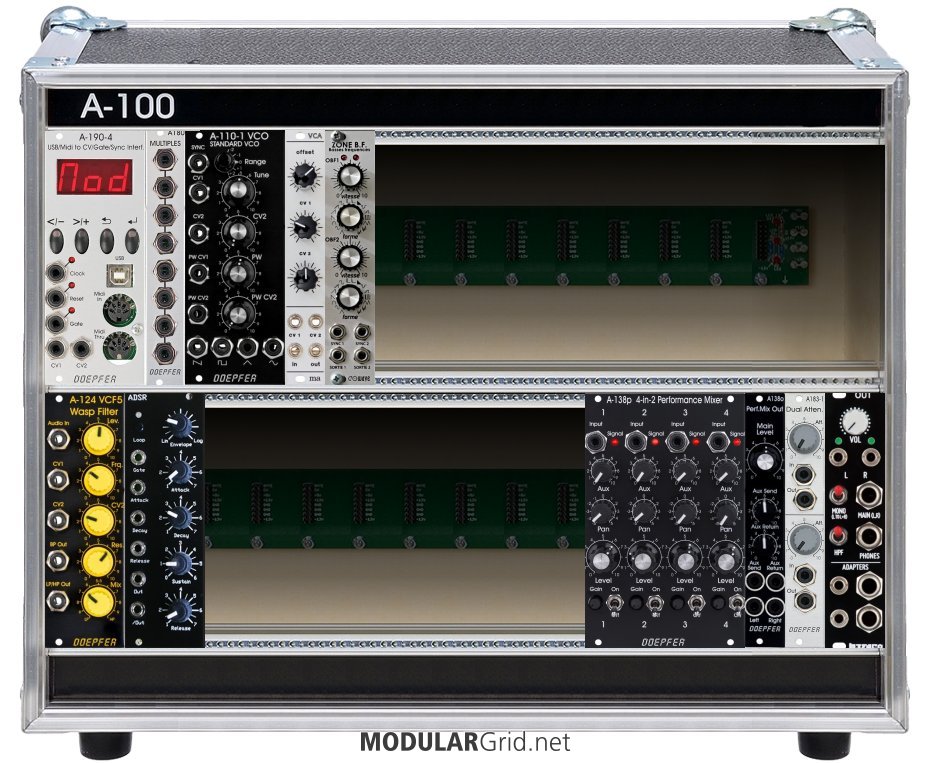This is an interesting point, before deciding to start building a modular synth I wanted to integrate the Neutron into the setup but I thought that starting from the basics it could help me learn a lot more (also if costs much more).
I might also consider integrating the neutron directly into the eurorack...
DON'T do this. The Neutron already has power and housing, and the modules that should go in here do NOT. Besides, unless you're down for losing very close to an entire 84 hp row, it simply takes too much out of the (expensive!) rack to be justifiable.
- Can I use the A-138o also as an attenuator before the befaco output?
No. The A-138o must be tandemmed with the A-138p, for one thing, and this negates standalone operation. Also, this is intended as a stereo summer from the 138p which also contains the AUX send/return routings; as such, what you suggest doing amounts to turning down the level to send it to another thing that...turns down the level. The Department of Redundancy Department might approve, but it's very technically unsound otherwise.
- Why I need also an attenuator for input? In this system I have only midi as input signal, I'm probably wrong but I want to understand.
You don't need an attenuator for an audio input. What's needed there is a preamp to bring the levels UP to synth levels. And, preferably, an envelope follower as well so that you can extract dynamic CV from the sound's envelope.
- On the Digitone or Octatrack you can sequence multiple tracks so what can I use to split my midis into cv?
There's quite a few MIDI-CV interfaces out there that offer lots of assignability to their patch points...the A-190-4 isn't one of them, though. As for what'll work here, well...do you really want to send MIDI to the modular, or would you prefer being able to send CV/gate/trig/clock directly out of the DAW as those signals? Two different approaches, requiring two rather different equipment and software considerations.
Looking at the thread thus far, I think you might benefit greatly from NOT trying to jump to modular hardware just yet. Instead, you need to really comprehend what these instruments are about before proceeding further. While I realize you want to "...detach myself from the PC as much as possible...", what I'm going to suggest results in the exact opposite...and that's VCV Rack. However, since VCV looks and ACTS much like a Eurorack system (it even has 1:1 module replications from makers such as Instruo), and since you seem to need a better grasp on what's going on with modular synthesis in general, I'd suggest starting THERE and getting some experience under your belt before heading back into hardware. Otherwise, this is the sort of situation that gets expensive and frustrating very quickly. But with VCV...well, it's free, and it allows you to make TONS of mistakes without destructive or expensive consequences. And yes, you can lock it up to the DAW very easily...it comes with VST bridge plugs. https://vcvrack.com/

